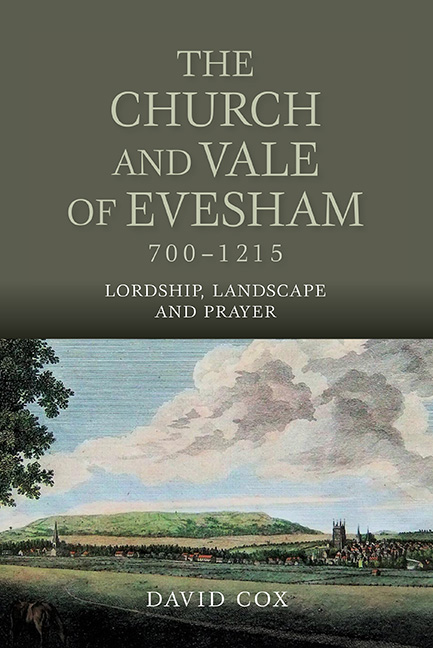Book contents
- Frontmatter
- Dedication
- Contents
- List of Illustrations
- Preface
- Timeline
- List of Abbreviations
- Part I From Minster to Abbey (701–1078)
- Part II Abbot Walter (1078–1104)
- Part III Twelfth-Century Themes (1104–1215)
- Afterword
- Appendix: The Abbots of Evesham to 1215
- Select Bibliography
- Index
- Miscellaneous Endmatter
- Frontmatter
- Dedication
- Contents
- List of Illustrations
- Preface
- Timeline
- List of Abbreviations
- Part I From Minster to Abbey (701–1078)
- Part II Abbot Walter (1078–1104)
- Part III Twelfth-Century Themes (1104–1215)
- Afterword
- Appendix: The Abbots of Evesham to 1215
- Select Bibliography
- Index
- Miscellaneous Endmatter
Summary
The papacy invoked
IN the eleventh century Evesham abbey was aware of a vague tradition that 300 years earlier the pope had given his support to the newly founded minster. Byrhtferth of Ramsey in the early eleventh century was the first to publish, in a heavily interpolated version, a document that has become known as ‘St Ecgwine's Testament’. According to the ‘Testament’, after Ecgwine had received the lands at and around the hamm the pope signified his approval of the gifts by the use of his seal. The implication seems to be that the original grants had been confirmed in writing and that the pope's seal was then attached. The ‘Testament’, however, does not give the text of such a confirmation deed and does not even quote from it, and does not name the pope whose seal was supposed to have been added. There is thus no suggestion that Byrhtferth or his contemporaries had seen the supposed confirmation deed or a copy of it; had the text been extant at Evesham in the early eleventh century Byrhtferth would probably have reproduced it. Although the ‘Testament’ does not date the pope's confirmation Byrhtferth does try to add some substance to his version of the ‘Testament’ by linking the supposed confirmation to an historical event found in Bede's ‘Ecclesiastical History’: the joint visit to Rome by Coenred (King Æthelred's successor) and Offa of the East Saxons, which Bede (though not Byrhtferth) says took place in 709 and thus during the papacy of Constantine I. Bede's history, however, does not bear out Byrhtferth's story that Coenred and Offa were accompanied to Rome by Ecgwine and that all three met the pope; whereas Byrhtferth has the three returning to England with the pope's confirmation, Bede records plainly that neither Coenred nor Offa ever returned from Rome, nor does Bede say that Ecgwine had gone with them. Byrhtferth's story of a papal confirmation brought back from Rome by Coenred, Offa, and Ecgwine was an ingenious fiction. There could have been some kind of papal confirmation relating to the foundation of the minster but no text of it seems to have been known at Evesham by the early eleventh century and the credible part of ‘St Ecgwine's Testament’ does not allow one to suggest its putative date or to attribute it to a particular pope.
- Type
- Chapter
- Information
- The Church and Vale of Evesham, 700-1215Lordship, Landscape and Prayer, pp. 118 - 126Publisher: Boydell & BrewerPrint publication year: 2015

